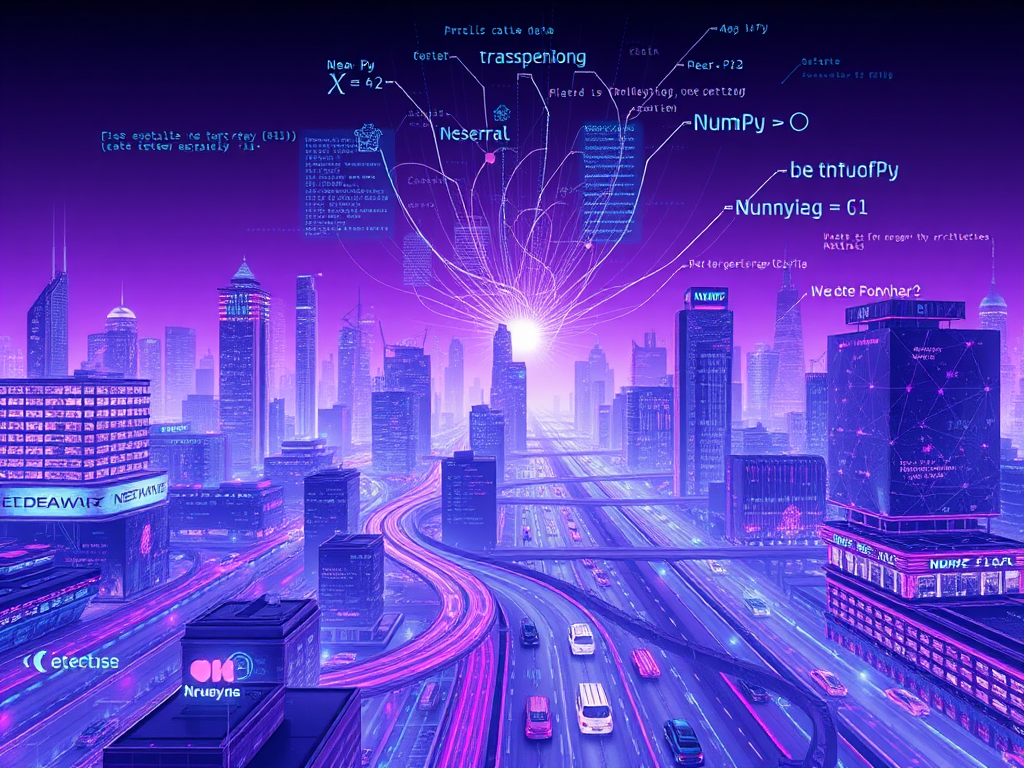Hello, Python enthusiasts! Today, let's talk about Python's third-party libraries. Are you already excited about this topic? The richness of the Python ecosystem can be dazzling, with various powerful third-party libraries that are like wings for your code, allowing it to fly higher and farther. So, which third-party libraries are most worth our attention and use? Let's explore together!
Data is King
In this big data era, the importance of data analysis and visualization goes without saying. Python shines in this field, and why? Because it has a series of powerful data processing libraries!
First, we must mention NumPy and Pandas, the "data twin stars." NumPy is like the cornerstone of data analysis, providing multidimensional array objects and various mathematical functions that allow us to efficiently process large amounts of data. Pandas goes a step further; its DataFrame structure is truly a data analyst's right-hand man, capable of data cleaning, transformation, and analysis.
Have you ever encountered a situation where you've worked hard to analyze data but don't know how to present the results? Don't worry, Matplotlib and Plotly are here to help! Matplotlib is a veteran 2D plotting library that can easily handle line graphs, scatter plots, and histograms. If you want some cooler interactive charts, then Plotly is definitely your go-to choice.
Speaking of this, I have to mention my personal experience. I remember once I needed to analyze a bunch of sales data and do a visual presentation. I was a bit worried at first, but after using Pandas to process the data and Matplotlib to draw graphs, the whole process was smooth sailing. The final presentation effect even amazed my boss; he thought I had pulled several all-nighters! In fact, without these powerful libraries, I might have really needed to stay up all night.
Web Scraping Tools
After discussing data analysis, let's look at another popular field - web scraping. Have you ever fantasized about writing a crawler to capture data from the entire internet? Although this idea is a bit exaggerated, Python's scraping libraries can indeed allow you to easily obtain large amounts of web data.
The Requests library is definitely a star in the scraping world, simplifying the complex HTTP request process to the extreme. Combined with Beautiful Soup, you can easily extract the data you want from HTML pages. If you want a more powerful and efficient scraping framework, Scrapy is definitely worth a try.
I remember the first time I wrote a crawler using Requests and Beautiful Soup, it felt amazing! Web data scraping, which used to seem complex, now only required a few lines of code. However, I want to remind everyone that although scraping is interesting, it's important to follow website usage rules and legal regulations.
Web Development Magic
If you're interested in web development, you can't miss the Flask and Django frameworks. Flask is like a Swiss Army knife, small but fully functional, especially suitable for rapid development of small applications. Django, on the other hand, is more like an all-around warrior, providing a full suite of solutions from database operations to template rendering, very suitable for developing large and complex web applications.
I personally prefer Flask because of its flexibility. I remember once I needed to quickly develop a simple API service, and it only took me an afternoon with Flask. However, for large projects, I would still choose Django; its ORM and backend management functions are really convenient.
Machine Learning Tools
When talking about Python's power, how can we not mention machine learning? Scikit-learn, TensorFlow, and PyTorch, these three libraries can be said to be the "Three Musketeers" of the machine learning field.
Scikit-learn provides various classic machine learning algorithms, from linear regression to random forests, it has everything. Its API is designed very elegantly, even if you're new to machine learning, you can quickly get started.
TensorFlow and PyTorch are the main forces in deep learning. TensorFlow's static graph design makes it perform excellently in large-scale deployment, while PyTorch's dynamic graph feature makes it easier for researchers to experiment and debug.
I remember the first time I implemented a simple classification model using Scikit-learn, that sense of achievement was indescribable. With just a few lines of code, I could build a decent prediction model, it felt really great!
Other Practical Treasures
Besides the "big name" libraries mentioned above, Python has many other practical little treasures waiting for you to discover.
For example, Pillow is a powerful image processing library. Whether it's resizing images, rotating images, or adding filters, it can handle it easily. I once wrote a simple image batch processing tool with it, helping a friend process hundreds of wedding photos, and the effect was surprisingly good.
There's also Colorama, which allows you to output colored text in the terminal. Although it may not seem very important, it's really useful when you need to highlight certain information in the command-line interface. I often use it to beautify the output of my command-line tools, making the user experience better.
Summary
Alright, we've talked about so many Python third-party libraries today, are you eager to try them out? These libraries are like powerful toolboxes that can help you complete various tasks more efficiently. But remember, no matter how good the tools are, we need to master them to unleash their power.
So, I suggest you start with the field you're most interested in and choose one or two libraries to study in depth. For example, if you're interested in data analysis, focus on NumPy and Pandas first; if you want to do web development, start with Flask or Django. Take it slow, step by step, and you'll find that Python's world is really wonderful.
Finally, I want to say that Python's charm lies not only in these powerful third-party libraries but also in its active community and continuously developing ecosystem. So, maintain your enthusiasm for learning, keep up with technological developments, and you'll surely find your place in the Python world.
So, which Python third-party library do you like the most? Feel free to share your thoughts and experiences in the comments. Let's swim together in the ocean of Python and discover more treasures!




 Previous
Previous 





